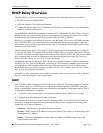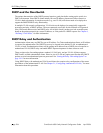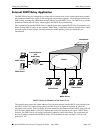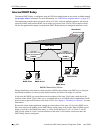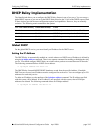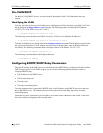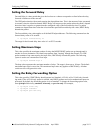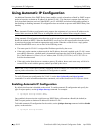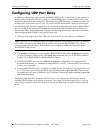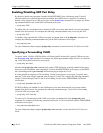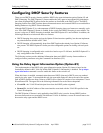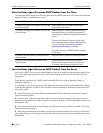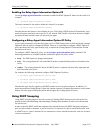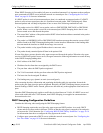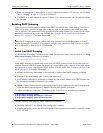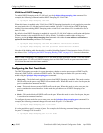
Configuring DHCP Relay Configuring UDP Port Relay
OmniSwitch 6600 Family Network Configuration Guide April 2006 page 18-13
Configuring UDP Port Relay
In addition to configuring a relay operation for BOOTP/DHCP traffic on the switch, it is also possible to
configure relay for generic UDP service ports (i.e., NBNS/NBDD, other well-known UDP service ports,
and service ports that are not well-known). This is done using UDP Port Relay commands to enable relay
on these types of ports and to specify up to 256 VLANs that can forward traffic destined for these ports.
The UDP Port Relay function is separate from the previously described functions (such as global DHCP,
per-VLAN DHCP, and automatic IP configuration) in that using UDP Port Relay does not exclude or
prevent other DHCP Relay functionality. However, the following information is important to remember
when configuring BOOTP/DHCP relay and UDP port relay:
• UDP port relay supports up to three UDP relay services at any one time and in any combination.
Note. If the relay service for BOOTP/DHCP is disabled when the switch reboots, the service is automati-
cally enabled when the switch comes back up. If there were three non-BOOTP/DHCP relay services
already enabled before the reboot, the most recent service enabled is disabled and replaced with the
BOOTP/DHCP relay service.
• The ip helper commands are used to configure BOOTP/DHCP relay and the ip udp port commands
are used to configure UDP port relay. The ip udp relay command, however, is also used to enable or
disable relay for BOOTP/DHCP well known ports 67 and 68.
• If the BOOTP/DHCP relay service is disabled, the ip helper configuration is not retained and all
dependant functionality (i.e., automatic IP configuration for VLAN 1, Telnet and HTTP client authen-
tication, etc.) is disrupted.
• Relaying BOOTP/DHCP traffic is available on a global and per-VLAN basis. Using this function on a
per-VLAN basis requires setting the DHCP relay forwarding mode to per-vlan only. UDP port relay
for generic services is only available on a per-VLAN basis, but does not require enabling the per-vlan
only forwarding option.
Configuring UDP Port Relay for generic UDP services is a two-step process. The first step involves
enabling UDP Port Relay on the generic service port. The second step involves specifying a VLAN that
relay will forward traffic destined for the generic service port. Both steps are required and are described
below.



